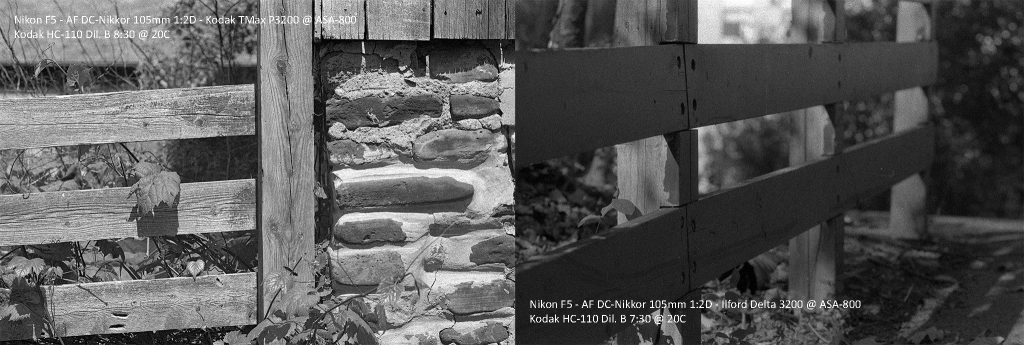So what happens when you put the two ASA-3200 speed films against each other? Well, you have the 3200 club. As everyone knows, Kodak this year re-released their TMax P3200 film and while Ilford has always maintained their Delta 3200 films, I decided in light of having reviewed both films, to compare the two. Now, this blog isn’t designed to speak to which one is better than the other. Because there’s already too much of that in the Photographic community as a whole. To start off what do the two film stocks have in common? Well, both are a modern T-Grain emulsion, where the silver halide crystals are uniform and T-Shaped and fit together compared to classic grain which is square and far more random. This fact clearly shows on the images that even at box speed maintain a sharpness and almost uniform look about it. But how do they compare against each other? For this, I made sure that when I shot and souped the review rolls I maintained common threads across the six rolls I’ll be comparing here. I’ll be comparing all 35mm films, shot at ASA-800, ASA-1600, and ASA-3200. I wanted to include ASA-6400, but for that speed, I shot the Delta 3200 in Medium Format so to compare the larger negs against a smaller one would be unfair. But more on that later.
Shooting at ASA-800
For the 800-speed test, I decided to develop the film in HC-110, while it might not have been the best choice, it’s a generally go-to developer for me. In both cases, I shot the film through the Nikon F5 with the AF DC-Nikkor 105mm 1:2D lens, and Dilution B for the developer. In this test I actually feel the P3200 comes out on top, the grain structure is much finer as is the general look of the grain. The Delta muddies up a bit and is soft around the edges. However, when it comes to mixed light, especially shadow detail, Delta edges out over TMax.


Shooting at ASA-1600
The 1600 mark is where I feel both films shine! Each film stock comes out as I would say clean, the tonality across the range, contrast is on point, and the images are sharp. The only point where they both differ is in the grain, with TMax edging out the Delta. In this case, I shot both rolls using a Nikon F90 the AF Nikkor 50mm 1:1.4D and developed in Stock Ilford Microphen. Lighting conditions were about equal being indoor in a museum environment, the ROM (TMax) and a Butterfly Conservatory (Delta). Either way I feel ASA-1600 is the native speed of both film stocks, but having the range to shoot them at 3200 without too much trouble.


Shooting at ASA-3200
Here at ‘box speed’ is where I feel these films start to fall down. For shooting, I shot the Nikon F5 with the AF Nikkor 35mm 1:2D each roll souped in Kodak TMax Developer (1+4). I had hoped that the compensating nature of the developer would help out, especially the P3200, however, I think I should have shot the roll outside instead of indoors in dark churches. In both cases, the films performed exactly how I expected them to, with heavier grain, but you still have sharp images. At 3200 I do give an edge to the Delta film with slightly finer grain and sharp images. Tonality and contrast are about equal in my view.


Where does that leave us? As I said in the start, this isn’t about picking which film stock is superior to the other. And Delta does have one thing over TMax, the fact that you can get Delta 3200 in medium format, and have shot it at 6400 in medium format, I can see the difference between the Delta and the TMax. I honestly think Kodak missed the mark in not releasing a medium format version of TMax P3200. In both cases this isn’t a film that I will shoot often, I much prefer to push film like Tri-X and HP5+ and push them up, but if I were to reshoot these fast films I will be pulling them back to ASA-1600. If you want to read the individual reviews for both films, you can read the TMax P3200 review and the Delta 3200 review on their posts.